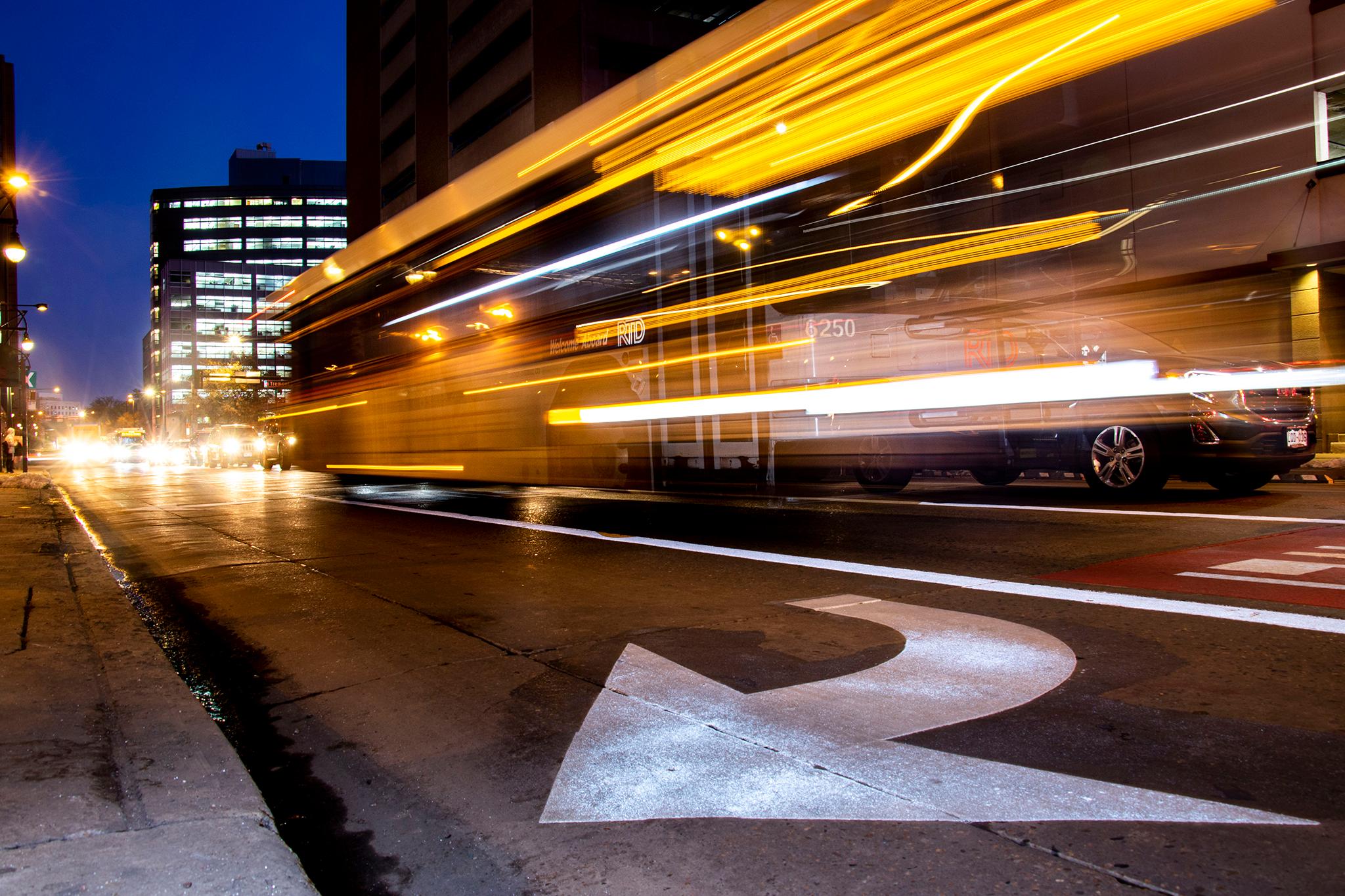Many of Denver's downtown streets aren't organized for the people who use them most and are generally geared toward cars, which can make for uncomfortable, slow and even dangerous trips for people who walk, roll, bike and bus. And demand on those streets will only grow over the next two decades.
That's the thinking behind "Denver Moves: Downtown," the latest transport-focused plan from the city planners who brought you "Denver Moves: Transit," "Denver Moves: Pedestrians & Trails," "Denver Moves: Bicycles," "Blueprint Denver" and the "Vision Zero Action Plan."
Like its cousins, the downtown mobility scheme (which is still in production) has mounds of information about how people move around, the barriers to creating a system that moves everyone around safely and efficiently, and a lot of ideas on how to prioritize the cleanest, most efficient modes of travel: feet and wheelchairs, bikes and scooters, and buses and trains.
Also like its cousins, most of the stuff in the downtown transport plan is unfunded with no guarantee of realization. (The Broadway bike lane, first conceived eight years ago, is still mostly unbuilt.) While some shorter-term projects already exist, the plan guides investments over the next 20 years. It does not guarantee them.
"I think you have a nimble department in the city that will really focus on prioritizing our needs that move the needle the most," said Director of Transportation and Mobility Planning Jennifer Hillhouse during a virtual public meeting last week when asked about the pandemic-inspired economic downturn.
Denver's streets belong to everyone but primarily serve drivers. There's not enough room -- or time -- to maintain the status quo.
Between 54,000 and 62,000 people moved into, out of and through downtown in the fall of 2018 during morning and afternoon rush-hours, according to a study by the Denver Department of Transportation and Infrastructure. Planners predict that number will grow by 40 percent to between 76,000 and 87,000 people over the next 20 years.
By 2030, the city government aims to reduce car commutes from around 70 percent to 50 percent in part because vehicle emissions are the city's second-largest contributor to climate change-causing greenhouse gases.
Bikes, buses, feet and wheelchairs are cleaner than cars. Plus, they can move a lot more people in a lot less space -- and they will have to, because streets aren't getting any wider.
"We cant meet all of this demand by just providing space for vehicles just because there isn't enough space to do so," said Riley LaMie, a transportation planner with DOTI. "So we must also provide travel options that can efficiently move more people using the existing space on the roadway."
Right now, streets aren't designed to move everyone as efficiently and safely as possible. Take 18th Street, for example. Bus riders make up 58 percent of all travelers on 18th, yet buses get 0 percent of dedicated right-of-way. Cars carry 29 percent of the street's travelers but essentially own 54 percent of the right-of-way.
Hence, bus-only lanes are coming to 18th to speed up buses for current riders and attract new ones.
Here are the projects being proposed to change downtown (if the city government prioritizes them with money, time and political will, of course).
The gist of the changes can be summed up with these words: bus lanes, bike lanes, sidewalk enhancements, car-free streets, two-way conversions, curb management and, yes, a gondola.
Denver planners want to build 30 miles of bike lanes downtown, 70 percent of them with physical protection like you see on select bikeways. Four-and-a-half miles of one-way streets would become two-way to calm driving speeds and make things easier on freight drivers and, well, everyone who wants to travel both ways. Intersection signals would be adjusted to prioritize pedestrians, and trees will supposedly abound with the urban forest initiative meant to throw shade (in a good way) on residents and visitors.
"Every street downtown is intended to prioritize pedestrians, but in many locations, we're actually recommending improvements that also enhance a sense of place and make for an improved experience while walking," said Paige Colton, a DOTI planner.
While those improvements will, generally, happen throughout downtown, here are the proposed "signature" projects. Yes, this is the part about the gondola:
Larimer Square would be permanently closed to cars, while the rest of the street would be completely redesigned to prioritize buses and bikes.
Transit would get a boost from a circulator -- a fixed bus route with buses coming so frequently that you don't need a schedule, like the 16th Street shuttle:
Curb space is a highly sought-after downtown commodity. Drivers want it for parking, delivery drivers need it for loading and unloading, bicyclists and scooter riders need it for parking and bike lanes, and transit riders need it for bus stops. City planners want to create a more diverse and consistent block type while more than doubling loading zones, from 550 to 1,250, to make room for delivery drivers, and ride-share providers without disrupting bike and car traffic.
Broadway's two grand boulevards:
Some fancy new bikeways:
The transformation of Wewatta Street and the extension of the 16th Street Mall:
That scary part of the 15th Street bike lane (where it ends) would get less scary and be extended toward Highland:
Bannock Street would become a bicycle and "festival" street:
An update to pedestrian signals at intersections:
Big changes to 15th and 17th streets:
Again, it's important to remember that these changes are not guaranteed. Some things can happen pretty much overnight -- like the bus lanes on 15th Street proved -- but those were the products of years and years of talking, planning, budgeting and pushing from sustainable transportation advocates.
We'll check in 20 years from now!














